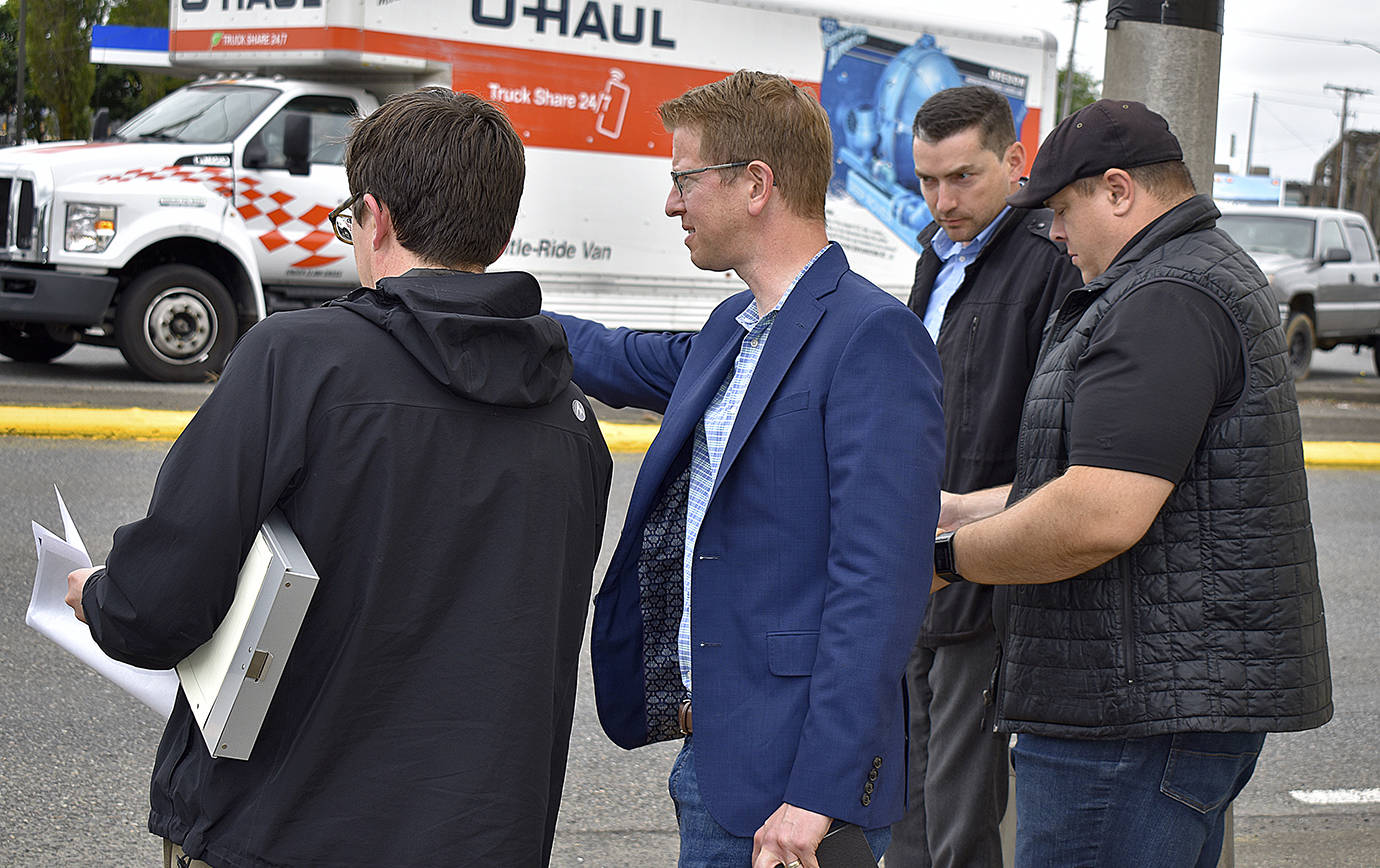The need for relief from train and vehicle traffic conflicts in East Aberdeen is pretty well-known to anyone who regularly travels Highway 12. The trick is convincing federal funding sources of the project’s importance, not just locally, but regionally and beyond.
A roundabout and an overpass, part of the roughly $52 million proposed East Aberdeen rail separation project, would greatly improve safety and traffic flow, both private and commercial, through the area, which is responsible for about 70% of the city of Aberdeen’s retail sales tax, said Mayor Pete Schave.
Local Congressional members are on board. Sen. Maria Cantwell was at the Port of Grays Harbor on June 30, talking to Port and city leaders about her proposed at-grade rail improvement grant fund, which could help fund the project.
Rep. Derek Kilmer visited Aberdeen on Wednesday to get the latest information on the project and take a tour of the proposed site.
“I feel like since I’ve been representing this community I’ve had it tattooed on my arm how important this project is,” said Kilmer to city leaders from Aberdeen and Hoquiam, and Port of Grays Harbor representatives at City Hall on Wednesday.
“When we looked at local project priorities, we were intentional about kind of making a screen that was, what’s actually going to create economic opportunity, was going to remove barriers to economic opportunity? I feel like this is a prime example of that. If we can start checking off some of these barriers, then we can start seeing more positive momentum economically.”
In the city of Aberdeen’s latest grant application — a U.S. Department of Transportation Rebuilding American Infrastructure with Sustainability and Equity (RAISE) grant — City Engineer Kris Koski drafted four main benefits of the project, with social justice and climate change provisions — which weigh heavily, as detailed in the grant’s lengthy title, in modern grant applications.
“So we’re definitely trying to hit those points, but also make sure that we make all the connections to our project goals,” Koski told Kilmer.
Each of the four points “starts with what this project will do,” with the emphasis on “will.”
First, “this project will directly benefit an Area of Persistent Poverty by providing its residents with a full range of transportation alternatives over a busy railroad, eliminating daily delays for its residents as they shop, obtain services, and commute to work.”
The project “will be a broad step forward in achieving the climate change goals of the City of Aberdeen, State of Washington, and country, significantly reducing emissions from idling vehicles that are waiting for trains to pass, and for highway traffic that is stopped by train events. The separation of vehicles, trucks, bikes, pedestrians, and transit from train traffic will protect and promote low-carbon freight movement by rail.”
Third, “This project is a strategic investment in the national rail and port infrastructure, removing a major conflict point on a rail corridor that is economically significant today, has the capacity to grow, and connects national freight to international markets via a deep water port.”
The fourth point on the grant application stated, “This project will provide uninterrupted 24-hour emergency access to a major commercial area of local and regional significance that is currently completely isolated by train crossing events, greatly reducing the risk of injury, death, and property loss due to conflict of emergency responders and blocking trains.”
Koski said the RAISE grant request is for $2.08 million. That’s not including the $1.4 million already being used for what Koski referred to as the current “partial preliminary engineering” phase, “because it’s just enough engineering to complete our environmental documentation.”
“We’ve gotten this far by an incredible partnership with our local cities, our local Port, and county and state funding,” said Koski.
That includes $200,000 each from the city of Aberdeen and the port, $300,000 in county funding, and $700,000 in state money.
Kilmer said the project has made its way into the federal surface transportation funding legislation under consideration in the House.
“The puck’s across the center line now, which is a good start, but we still have to get it into the net, by getting it through the Senate and signed by the president, but it’s a big deal” that it’s included in the mix of local projects Kilmer was asked to supply to the House Committee on Transportation and Infrastructure.
Koski said the total cost of the project — design, permitting, right-of-way acquisition and construction — is roughly $52 million.


